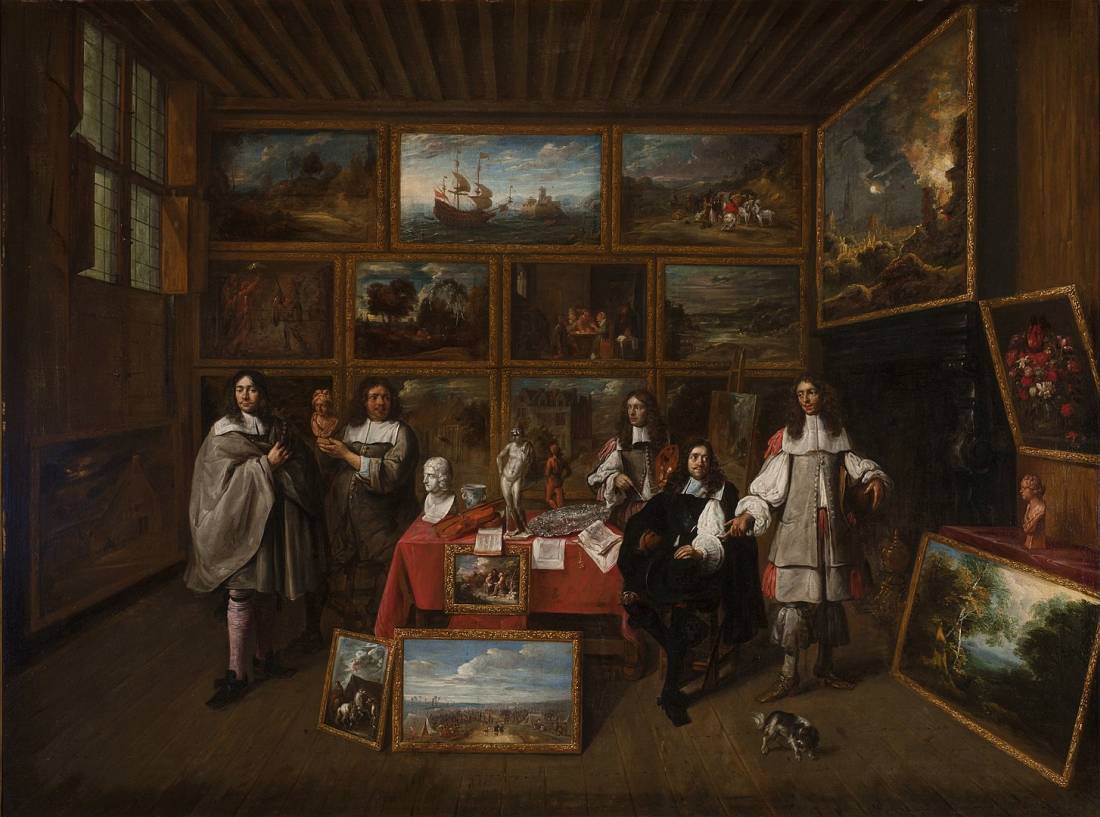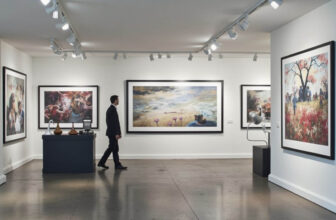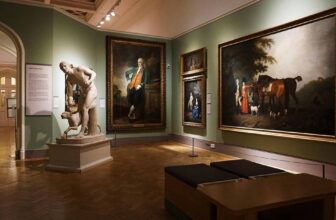
What We Can Learn from Art Investment Giants
Art has always been more than just beauty on a wall , it’s power, legacy, and wealth preservation. Over the past few decades, a quiet revolution has unfolded in the world of art investment. While most people see paintings and sculptures as cultural treasures, the world’s wealthiest investors see them as strategic assets. Some of the most powerful art investors treat blue-chip masterpieces like others treat stocks or real estate , except art often delivers emotional and financial returns that no other asset can match.
But what exactly do the world’s top collectors and art investment giants know that others don’t? How do they consistently acquire pieces that appreciate in value, hedge against inflation, and build generational wealth? In this in-depth article, we’ll uncover their secrets, study their strategies, and explore how anyone with the right mindset can learn from their playbook.
The Rise of Art as an Investment Class
For centuries, art was primarily collected by royalty, aristocrats, and religious institutions. In the modern era, it has evolved into a global asset class worth billions. According to market reports, the global art market consistently generates annual sales exceeding $60 billion. Auction houses like Christie’s and Sotheby’s regularly break records with headline-grabbing sales.
What’s changed is the mindset. In the 21st century, art is not just collected for prestige but also for its investment potential. Ultra-high-net-worth individuals, family offices, hedge funds, and even investment firms are diversifying their portfolios with paintings, sculptures, digital art, and photography.
The reasons are compelling:
Art can hedge against inflation because masterpieces often rise in value over time.
It provides portfolio diversification, performing differently from stocks or bonds.
Rare artworks are finite assets, creating scarcity-driven value.
Art offers cultural capital and status, which traditional investments do not.
This shift has given birth to a new breed of investor , the art investment giant.
Who Are the Art Investment Giants?
The art investment landscape is shaped by a small but influential group of individuals and families who dominate top-tier collecting. Their strategies shape trends, move markets, and influence the trajectory of entire artist careers. Let’s look at some of the most powerful players.
2.1. Eli Broad , The Philanthropic Visionary
Eli Broad was one of the most influential art collectors of the 20th and 21st centuries. His collection included works by Jeff Koons, Cindy Sherman, and Jean-Michel Basquiat. But more than collecting, Broad was a strategist , he used art to build cultural capital, founding museums and lending works to institutions, increasing the visibility and value of his collection.
2.2. François Pinault , The Corporate Collector
French billionaire François Pinault, owner of the Kering luxury group, controls one of the most significant private art collections in the world. His strategy combines early acquisition of contemporary artists with institutional exhibition, increasing the prestige and market value of the pieces he owns.
2.3. Charles Saatchi , The Trend Shaper
Charles Saatchi is famous for discovering and promoting artists before they become household names. By supporting the Young British Artists movement, he helped propel works into cultural and financial relevance. His approach highlights the power of timing and trend prediction in art investment.
2.4. Leon Black , The Discreet Power Player
Leon Black, a financier with a passion for art, is known for acquiring iconic masterpieces such as “The Scream.” His strategy is to acquire blue-chip masterpieces , works that have proven their value historically , ensuring stability and long-term appreciation.
These figures represent different but overlapping strategies: philanthropy, trend-setting, blue-chip acquisition, and institutional influence.
Secrets of the World’s Most Powerful Art Investors
What makes these investors consistently successful in a market where value can be subjective? Several shared philosophies and strategies emerge.
3.1. They Focus on Proven Artists
Art investors often acquire works from blue-chip artists , those with established market demand and historical significance. Masterpieces by Picasso, Monet, or Warhol tend to appreciate steadily over decades.
This doesn’t mean they ignore emerging artists, but they anchor their portfolios with stable, proven investments first.
3.2. They Build Strong Networks
Art investment giants aren’t just buyers , they’re connectors. They cultivate relationships with galleries, museums, curators, and auction house specialists. These networks grant them early access to coveted pieces and insider knowledge on upcoming trends.
3.3. They Influence the Market
By strategically lending works to major exhibitions or building private museums, top collectors elevate the visibility of the artists they collect. This boosts both cultural significance and financial value. It’s a win-win: public exposure and private gain.
3.4. They Play the Long Game
Unlike day traders, art investors think in decades, not months. Many acquire works with the intention of holding them for 10, 20, or even 30 years. This long-term horizon smooths out market volatility and maximizes appreciation potential.
Winning Strategies from the World’s Top Collectors
4.1. Diversification within Art Itself
The best art investors don’t just buy paintings from one artist or one genre. They diversify across:
Periods (Modern, Post-War, Contemporary)
Mediums (painting, sculpture, photography, digital art, NFTs)
Regions (European masters, American contemporary, Asian avant-garde)
This approach spreads risk and increases exposure to different market dynamics.
4.2. Acquiring Early and Holding
Some of the most successful collectors bought works early in an artist’s career. For example, Charles Saatchi acquired works by Damien Hirst before he became a global sensation. Early acquisition at lower prices, followed by patient holding, can yield exponential returns.
4.3. Investing in Proven Markets First
Most top investors secure a foundation of blue-chip works , established artists with a track record of performance. This provides financial stability, allowing more freedom to take calculated risks with emerging talent.
4.4. Leveraging Institutional Power
Power collectors often loan or donate works to major institutions like the Museum of Modern Art or Tate Modern. Exhibition history can significantly increase the value of a piece, while philanthropic visibility enhances reputation.
4.5. Using Data and Market Reports
Today’s investors rely not only on intuition but also on data. Auction records, price indexes, and market trend reports provide insights that guide buying decisions. Platforms tracking art sales help forecast appreciation potential.
Understanding the Art Market Ecosystem
To invest like an art giant, one must understand how the ecosystem works:
Galleries introduce artists and set primary market prices.
Auction houses provide liquidity and price transparency.
Museums establish historical significance.
Collectors and investors drive demand.
Art fairs and biennales create exposure and hype.
Powerful investors navigate all these spaces strategically. They often buy on the primary market (lower prices) and sell on the secondary market (auctions) after the artist’s value has matured.
The Psychology Behind Art Investment
Why do the world’s wealthiest people invest in art? Beyond financial returns, there’s a powerful psychological and emotional component.
Status and Prestige: Owning a masterpiece by Leonardo da Vinci or Mark Rothko signals cultural authority.
Legacy Building: Art collections can be passed down, immortalizing family names.
Personal Passion: Many collectors are genuinely passionate, which enhances their ability to spot quality.
Control over Narrative: By influencing exhibitions and artist visibility, investors can shape cultural history itself.
Understanding this psychology is key for new entrants. Passion and prestige can coexist with profit.
Risk Management in Art Investment
Even the most powerful collectors don’t rely on luck. They mitigate risks meticulously.
7.1. Authenticity Verification
Every piece is vetted with rigorous provenance checks. Authentication, documentation, and expert appraisals protect against forgeries.
7.2. Market Timing
While art investment is long-term, top collectors also monitor macro-economic trends. They understand when to buy, hold, or sell based on global liquidity, interest rates, and market sentiment.
7.3. Insurance and Security
Masterpieces worth millions are stored in climate-controlled, secure facilities. Insurance is non-negotiable, covering theft, fire, and damage.
7.4. Tax and Legal Structures
Many collectors use trusts, foundations, and holding companies to optimize taxes and protect their assets. These legal structures also enable smooth inheritance planning.
Lessons for Everyday Investors
You don’t need billions to learn from art giants. Their strategies can be scaled down.
8.1. Start with Research
Before buying anything, immerse yourself in the art world. Study market reports, auction results, and artist histories. Knowledge is your best investment.
8.2. Begin with Emerging Artists
While blue-chip works may be out of reach, emerging artists offer opportunities for growth. Look for those represented by respected galleries or featured in reputable exhibitions.
8.3. Focus on Quality, Not Quantity
One strong, well-chosen piece can outperform a room full of mediocre art. Prioritize quality and authenticity.
8.4. Network in the Art Community
Attend gallery openings, art fairs, and talks. Relationships open doors to opportunities you won’t find online.
8.5. Think Long-Term
Real art value often reveals itself over years. Avoid buying with a short-term flipping mentality unless you truly understand the market dynamics.
The Power of Provenance and Narrative
In the art world, storytelling matters. The value of a piece can be enhanced dramatically by:
Ownership history (e.g., once owned by a famous collector)
Exhibition history (shown at major museums)
Cultural relevance (connected to historical events or movements)
For example, when “Salvator Mundi” , attributed to Leonardo da Vinci , was sold for a record-breaking price, part of the value was tied to its incredible narrative.
Top collectors understand that art is both an object and a story. By cultivating and curating this story, they increase both cultural and financial capital.
Iconic Investments That Changed the Game
Let’s look at some legendary acquisitions that exemplify top strategies:
“No. 5, 1948” by Jackson Pollock was purchased for $140 million, and its value has only soared due to scarcity and historical significance.
“Orange Marilyn” by Andy Warhol fetched record sums, showing the power of pop culture icons in art value.
Early investments in Jean-Michel Basquiat turned modest purchases into multimillion-dollar assets.
These examples reveal one thing: timing, artist selection, and narrative create outsized returns.
The Role of Art Advisors
Many of the world’s top collectors work with professional art advisors who:
Help identify undervalued opportunities
Handle due diligence and provenance research
Manage negotiations and auction bidding
Guide long-term collection strategy
For smaller investors, hiring an advisor or consultant can help avoid costly mistakes and access insider knowledge.
Building a Personal Art Investment Strategy
Whether you’re investing $5,000 or $5 million, you need a structured approach:
Define Your Goals , Are you collecting for passion, profit, or both? Your motivation will guide your strategy.
Set a Budget , Determine what you can invest and stick to it. Remember to factor in storage, insurance, and transaction costs.
Research and Education , Learn about artists, movements, galleries, and market cycles. Knowledge compounds over time.
Buy Smart , Prioritize quality, provenance, and narrative. Avoid impulsive purchases.
Diversify , Balance emerging artists with more stable names if your budget allows.
Protect and Manage , Insure your works, document everything, and keep them in optimal conditions.
Reassess Over Time , Review your collection’s value periodically and adjust strategy as needed.
The Ethics and Responsibilities of Collecting
Powerful collectors shape not just markets but culture itself. With this influence comes responsibility:
Supporting artists fairly rather than exploiting early careers
Preserving cultural heritage for future generations
Promoting diversity and inclusion in the art world
Lending works to public institutions for educational access
Responsible investment creates a legacy that extends beyond financial gain.
Common Mistakes New Art Investors Make
Even the most promising investors can stumble. Here are pitfalls to avoid:
Chasing Hype: Buying overhyped art at peak prices rarely pays off.
Neglecting Provenance: Without proper documentation, your piece may lose value.
Overestimating Liquidity: Art is not as easily sold as stocks.
Ignoring Condition: Damage or restoration issues can drastically reduce value.
Lack of Strategy: Impulse buying leads to unfocused collections.
Learning from the mistakes of others can save you years of frustration and lost capital.
Inspiring Examples of Legacy Collections
The Broad in Los Angeles showcases how a private collection can become a cultural landmark.
The Pinault Collection in Venice and Paris reflects strategic acquisition over decades.
The Saatchi Gallery in London demonstrates how one collector’s vision can shape contemporary art movements.
These examples show that great collections are more than assets , they are living cultural archives.
The Relationship Between Art and Other Asset Classes
One of the secrets of top art investors is how they integrate art into broader wealth strategies. Art often behaves differently from stocks, bonds, or real estate, making it an effective hedge and diversification tool.
When markets fall, blue-chip art often holds or even gains value.
Art offers privacy and flexibility in wealth transfer.
Unlike real estate, art is portable and less regulated, though legal oversight is increasing.
This strategic integration strengthens portfolios and builds resilience.
Becoming a Strategic Collector
The world’s most powerful art investors don’t just buy paintings; they build legacies. They understand that art carries emotional, cultural, and financial value. Through disciplined strategy, deep market knowledge, and an appreciation for storytelling, they turn their collections into powerful assets.
Whether you’re acquiring your first piece or building a multimillion-dollar portfolio, the core principles remain the same:
Think long-term
Prioritize quality and provenance
Leverage networks and market knowledge
Integrate art into your overall financial strategy
By learning from giants like Eli Broad, François Pinault, Charles Saatchi, and Leon Black, you can develop your own approach to art investment , one that blends passion with profit and personal vision with cultural influence.
The art market may be complex, but it rewards those who see beyond the canvas. The next great collection might not just be in a billionaire’s vault , it could start in your hands.




